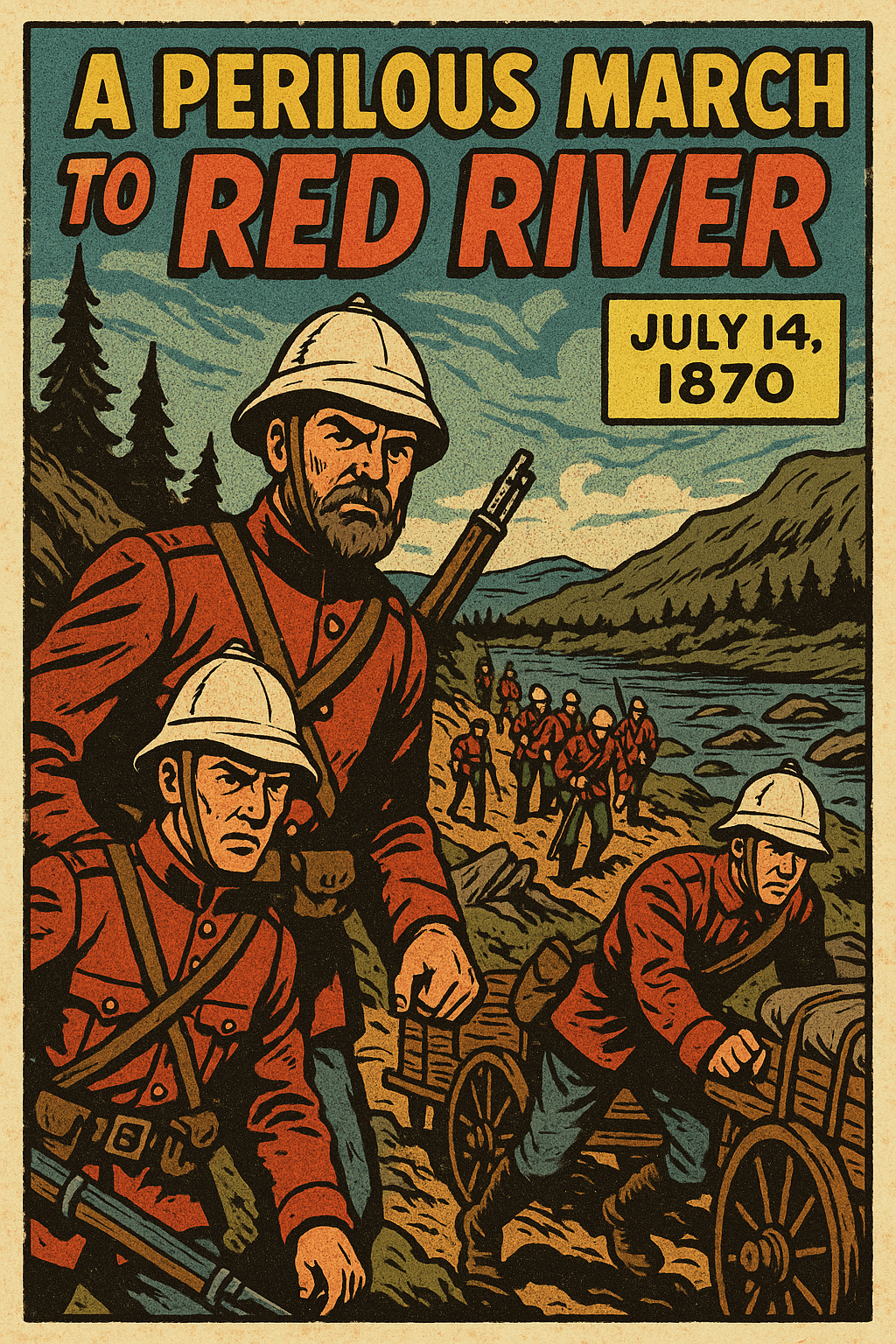
Today In Canadian History July 14: The Wolseley Expedition: Ottawa's Military Answer to the Red River Resistance
Share
While negotiations were underway in Ottawa to bring the Red River Settlement into Confederation as the province of Manitoba, a parallel plan was set in motion—one involving bayonets, not handshakes. On this day, July 14, 1870, the first troops of the Red River Expedition, under the command of the ambitious British Colonel Garnet Wolseley, began their arduous journey west from Toronto. Their official mission was to keep the peace and assert Canadian sovereignty, but for many, it was seen as a punitive force meant to crush Louis Riel's provisional government.
The expedition was a monumental logistical challenge. Comprised of British regulars and Canadian militia, the force of over 1,200 soldiers had to travel more than 2,000 kilometers through a landscape with few roads. The most difficult leg was the "Dawson Route" from Lake Superior to Fort Garry (present-day Winnipeg), a punishing sequence of rivers, lakes, and dense wilderness that required the men to row heavy boats and carry tonnes of supplies over dozens of grueling portages. It was a test of endurance designed to project the authority of the young Canadian government across the vast continent.
By the time Wolseley's force arrived at a rain-soaked Fort Garry in late August, the political landscape had already shifted. The Manitoba Act had been passed, and Louis Riel, fearing he would be arrested and tried for the execution of Thomas Scott, had fled just hours before the soldiers arrived. There was no battle to be fought. The troops marched into the fort unopposed, marking the end of the Red River Resistance. The expedition, however, left a complex legacy. It solidified Canadian control over the new province, but the aggressive military presence and the subsequent mistreatment of the Métis by soldiers and newly arrived settlers bred deep resentment and mistrust, sowing the seeds for the future North-West Rebellion.
